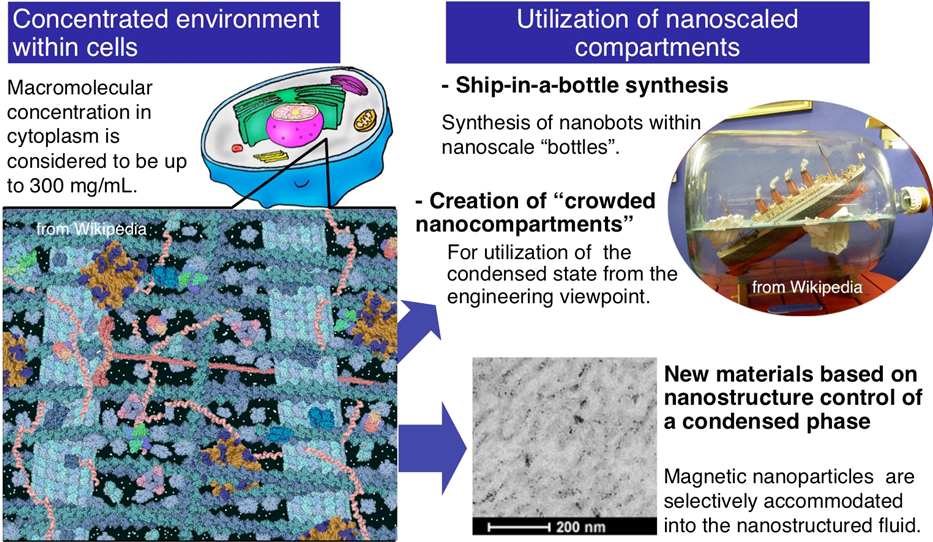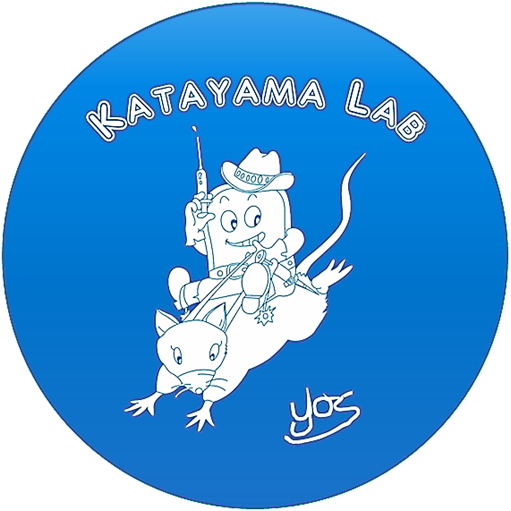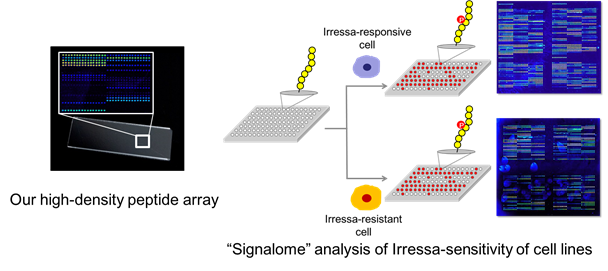Research
Our motto is "Chemistry for Medicine". We think flexibly to satify demands in medicine. Following is the present projects.
- Pathology-based drug delivery system
- "Signalome" as an index of cellular condition
- Harnessing imunity
- "Chemical transformation" for cell therapy
- Nano-detectors and novel therapies
- Nanobots drug delivery system
- Intracellular environment mimetic materials
1: Pathology-based drug delivery system
Drug delivery system (DDS) is an idea to delivey drug to diease site slectively to rasie the therapeutic efficacy but to reduce side effect. To achieve that, drug carriers modified with ligands against the marker proteins which are expressed in target cells have reported so far. However, such disease marker proteins somewhat expressed on healthy normal cells which sometimes leads to serius adverse effect. To overcome this issue, it is better to chang our mindset becuase such non-specific delivery to normal cell is inevitable. Thus, we have decided to desing DDS which does not work in normal cell. We are interested in intracellular signaling proteins which show varied patern of acitivities up to the kind of disease. We have desingned DDS which is activated responding to signaling proteins which are specific to kinad of disease. We named this D-RECS (Drug and Gene Delivery System Responding to Cellular Signal) and are applying to diseases including cancer, inflammation, and virus infection.
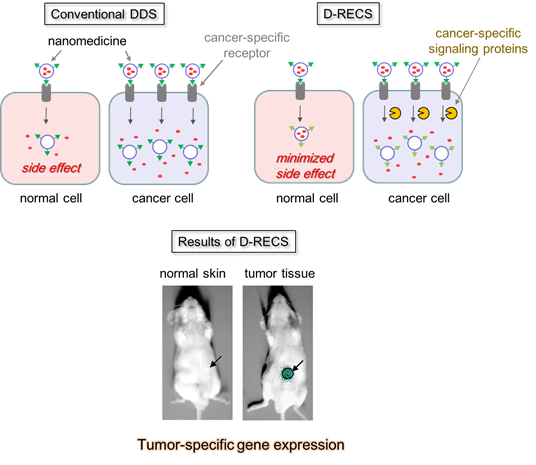
We are trying to improve the accmulation of nanomedicine to tumor. Based on the pathology and vasophisilogy of tumor, we desinged drug carrier which achives twice as high accumulation as a usual nanomedicine.
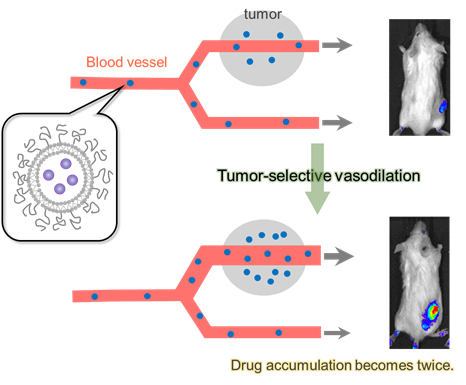
2: "Signalome" as an idex of cellular condition
Intracellular signaling shows specifc pattern of each patien even thoug the same disease. We are developing peptide-microarray which can evaluate these intracellular signaling pattern. We named this evaluation "signalome" to apply to companion diagnosis for order-made medicine.
3: Harnessing immunity
Immune system protects ourselves from infection of viruses and cancer cells generated by genetic mutation. However, once immune system is lost control, it causes autoimmunity and allergy. Immune system is also problematic in organ implantation because it rejects non-self organs. We are trying to develop methods to control immunity for tolearance or activation up to the patient's disease.
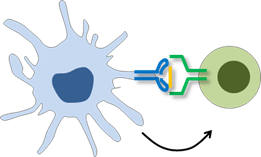
4: "Chemical transformation" for cell therapy
There are many kinds of membrane proteins on cell surface to respond to outer stimuli. We can modify cellular function for each application by experessing membrane protein based on the genetic engineering. Such engineered cell are now beeing applied to tumor-immunotherapy. We are planing to create engineered cells based on chemical modification. This technique will be expand celular funtion becaue the molecules modified on cell surface in not limited in proteins. We creat useful cell surface modification techniqe for cell thrapy including tumor-immunotherapy and stem cell implantation.
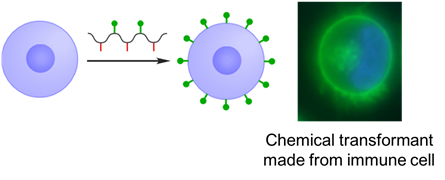
5: Development of nanoscaled body-explorers and novel therapies
Drug therapy without hospitalization is considered to be the ideal form for disease treatment. However, in many cases, sufficient efficacy cannot be obtained even by using appropriate medicine. In our group, “nanoscaled body-explorers” that can target to the lesion have been developed through rational material design, in order to clarify mechanism of the intractable diseases toward creation of novel therapies.
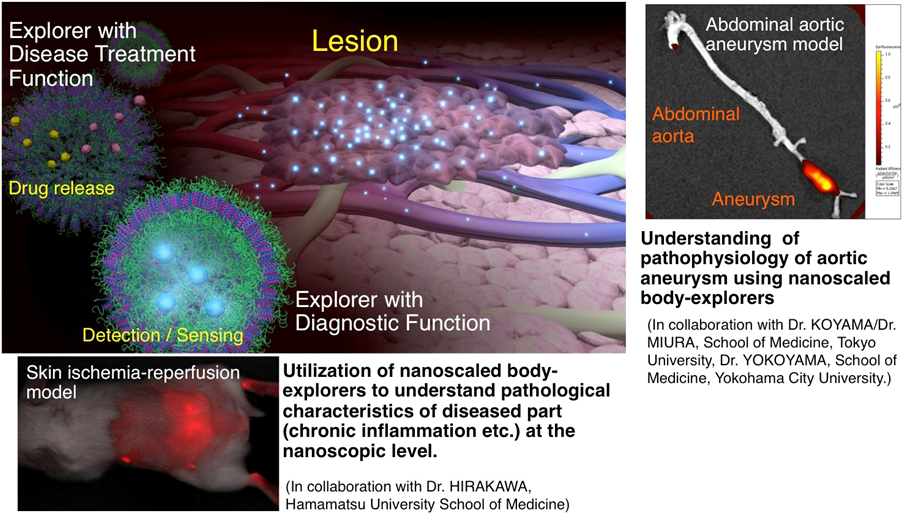
6: Nanobot-based drug delivery system
Drug delivery system (DDS), which means delivering medicines to the required place at the right time in necessary amounts, is becoming a crucial technique for pharmaceutical industry in these days. Beyond traditional DDS, we have challenged to develop the “Nanobot DDS” by using nanobots which can function autonomously at lesions.
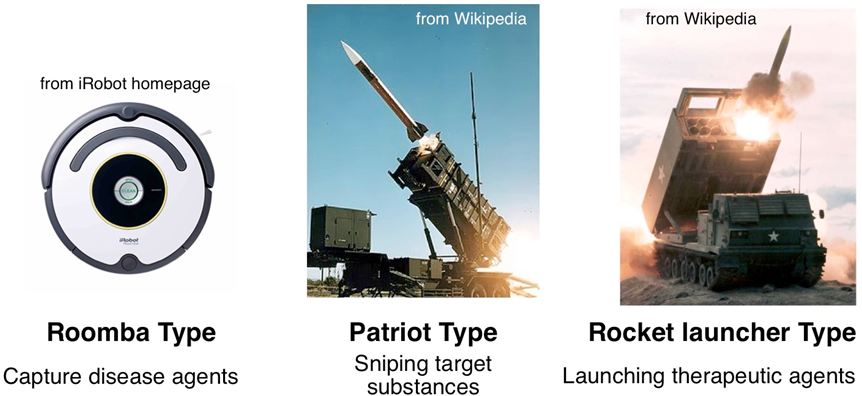
7: Intracellular-environment mimetic materials
Even with massive kinds of biomolecules concentrated, cells can still operate regularly by being compartmentalized and precisely organized into function units. In our group, we have challenged to develop novel materials to mimic the concentrated and compartmentalized intracellular environments for utilization of their functions in an engineering approach.
